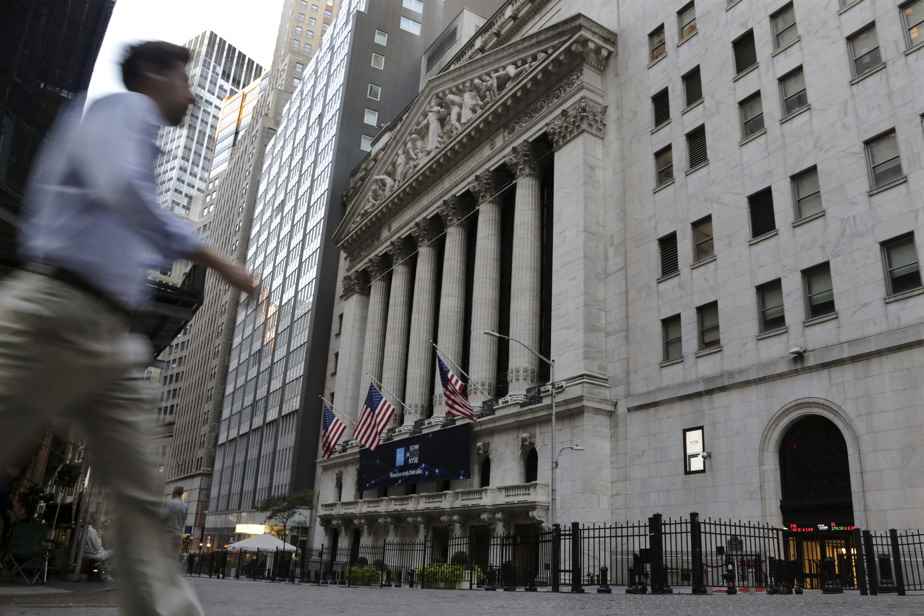(New York) The New York Stock Exchange ended sharply lower on Friday, dragged down by fears of a recession caused by the brutal monetary tightening underway.
Updated yesterday at 5:11 p.m.
The Dow Jones set a new record lower end of the year, down 1.62%. It had not finished a session this low since November 2020. As for the NASDAQ index, it lost 1.80%, while the broader S&P 500 index dropped 1.72%.
Intensified fears surrounding future economic growth weighed heavily on the markets on Friday, and the Toronto Stock Exchange closed sharply lower. The Toronto Stock Exchange’s S&P/TSX Composite Index lost 521.70 points, or 2.75%, to end the session at 18,840.98 points, the victim of a broad-based decline led by the energy sector.
“The market is finally taking the Fed (US central bank) at its word: they are going to cause a recession to fight inflation,” commented Chris Zaccarelli of the Independent Advisor Alliance. “This is bad news for markets, and even worse for workers and the economy. »
Investors thus continued to react to the communication from the Fed, which raised its rate by 0.75 percentage point on Wednesday but also signaled that it expected it to rise higher, and for longer, than Wall Street predicted.
On Friday, the market chose to “sell now and ask questions later,” summarized Quincy Krosby of LPL Financial. “We go for silver because volatility and uncertainty are rising. »
The VIX index, which measures market volatility, thus rose to its highest level in more than three months.
While Wall Street’s three star indexes finished a little higher than their lowest levels for the year in session, “it seems that they want to go lower, to the point where all the headwinds will be integrated”, according to Quincy Krosby.
The coloring of the session was not improved, on the contrary, by the publication of the PMI index, which showed a clear rebound in activity in the United States in September.
“Each time we have a better than expected indicator, brokers anticipate that this will allow the Fed to be even more aggressive on rates,” according to Edward Moya of Oanda.
The mood is all the more gloomy as no major indicator is expected before next Friday and the PCE price index, whose scope is relativized by the fact that it is late and does not relate to September, but on August.
Hundreds of stocks hit their lowest level of the year on Friday. The technology sector was particularly affected, such as Dell (-2.09%), HP (-1.40%), Intel (-1.96%) or Nvidia (-0.36%), which lost almost two-thirds of its capitalization in one year.
But the berezina was not limited to tech, and several “old” economy heavyweights also visited depths not seen since at least this time last year, from chemical group Dow (-1.94% ) to the conglomerate 3 m (-1.01%), via Visa (-0.98%), the telecommunications operator AT & T (-1.42%) or Nike (-1.55%).
Also at the lowest of the year, the courier group FedEx (-3.37% to 149.33 dollars), which published results well below market expectations, a week after a first early communication. The group announced a savings plan of 2.2 to 2.7 million dollars on an annual basis and an increase in its prices of at least 6.9% on average on 1er next January.
Boeing was grounded (-5.37% to 131.26 dollars) after the announcement, Thursday after the stock market, of an amicable agreement with the American market regulator, the SEC, which accused the aircraft manufacturer of having lied about the risks of his 737 MAX aircraft. The transaction provides for the payment of an indemnity of 200 million dollars.
The chain of semi-wholesale supermarkets Costco was shunned (-4.26% to 466.40 dollars) despite the publication of a quarterly profit above expectations. The group has seen the cost of its goods increase faster than its turnover.
The bond market evolved in scattered order. While the 2-year US rate rose again, to 4.26%, the yield on 10-year US government bonds eased to 3.68%, against 3.71% the day before.
“As long as the 10-year rate goes down, the market should remain stable,” argued Jack Ablin of Cresset Capital. The contraction of this rate reflects expectations of a medium-term recession, and would help limit the tightening of credit conditions in the United States, which would be favorable to the economy and the equity markets.
with The Canadian Press
